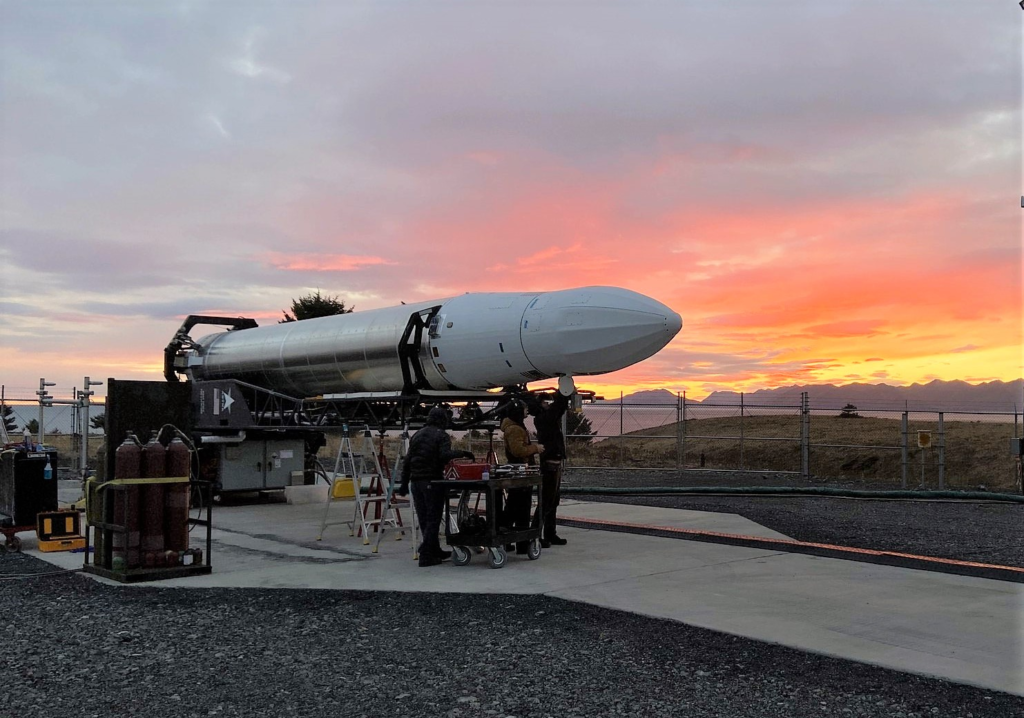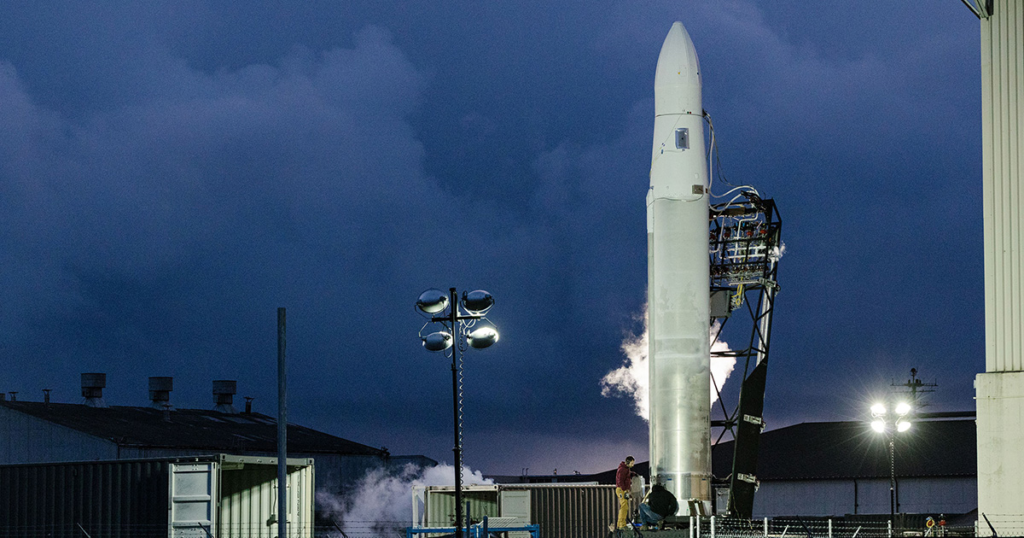
What Is Astra’s Plan To Stay In Business?
It’s almost been one full year since Astra’s most recent launch and the failure of the TROPICS mission. While in the beginning, Astra became the fastest company to reach orbit with a privately developed liquid-fueled rocket, out of 7 launches only two were successful. This caused the company to rethink its plans and move on from the Rocket 3 line.
In the time since then, we have received a few updates regarding Rocket 4 and more specifically a plan going forward. If Astra wants to stay above water Rocket 4 needs to not only be completed in a timely manner but also reach orbit without a hitch. As a launch company, you only have so many opportunities even when dealing with small-lift rockets.
New engine technology, launch system, vehicle design, and welding process are just a few changes hoping to turn the tide for Astra. Looking at past launches, a host of different errors ended up causing the failures. Here I will go more in-depth into Astra’s plan and current progress, whether or not a 2023 launch date is realistic, what to expect in the coming months, and more.
Astra’s Current Progress

Analysis of the most recent launch failure showed that a combustion chamber wall burn-through occurred 18 seconds into upper-stage flight. This burn-through was caused by a partial blockage of the injector. This launch was carrying a NASA payload that was lost as a result of the mishap. In regard to this relationship, the company released a statement saying, “Astra and NASA have agreed to modify the terms of our existing launch services agreement for NASA’s TROPICS mission to allow for the future launch of comparable scientific payloads on version 4.0 of Astra’s rocket. We are delighted to maintain our strong partnership and to have NASA as a launch customer on the next version of Astra’s rocket.”
Currently, Rocket Lab is getting ready to launch new TROPICS satellites after NASA gave them a contract following the failure. Focusing back on Astra, they have released a few updates on the progress of Rocket 4. Last month in March they tweeted saying, “Our first hot fire using the thrust vector control (TVC) system for Rocket 4’s first stage engine. The TVC is the mechanism that allows us to control the direction of the thrust for the rocket used by our Guidance Navigation Control (GNC) systems.” It seems like so far a lot of work regarding this new rocket has been focused around the main engine. In this case, the first stage engine architecture has been simplified from five battery pump-fed engines to two turbopump-fed engines and will deliver a maximum combined liftoff thrust of approximately 80,000 lbf. Astra is developing and qualifying an upgraded derivative of a previously qualified engine for this application.
When complete, Rocket 4 will stand 62 feet from tip to tail, with a total diameter of 72 inches. This overall size increase will allow the vehicle to carry greater volumes of propellant, and in turn deploy significantly more payload mass – with a target payload capacity of 600 kg to mid-inclination 500 km low Earth orbit over the course of the product lifecycle. With this size increase comes a bigger fairing as well. Rocket 4’s increased diameter provides a dramatic increase in the volume available for their customers’ spacecraft. This increased fairing was designed to fit one ESPA Grande spacecraft, two ESPA spacecraft, or multiple CubeSats – with a maximum height of 133 inches and a maximum width of 67.5 inches.
Despite some issues in the past, Rocket 4’s first-stage architecture uses much of the same architecture from Rocket 3.3, with two key updates intended to dramatically improve performance and manufacturability. First, the domes are now stamped directly from single sheets of aluminum, reducing weight and streamlining overall manufacturability – which in turn reduces launch costs. The second is the engine change.
Multiple failed missions in the past had to do with the upper stage architecture. Whether the issue was the second stage engine, fairing deployment, etc, it had some consistent problems. That’s exactly why the upper stage has undergone the largest architectural change from Rocket 3.3. Rocket 4’s upper stage has moved to a full-diameter, common dome design – which aligns production approaches between the two stages – meant to increase build reliability and decrease total manufacturing costs. The upper stage is propelled by a turbopump-fed liquid oxygen/kerosene engine delivering ~6,500 lbf. of vacuum thrust. This engine is also a derivative of an existing qualified engine. As of right now, the first launch of this new rocket is still scheduled for late this year. It would be a very fast turnaround time but possible based on the company’s history. This being said, many are concerned that part of Astra’s problem was rushing and moving too quickly. In order for this launch to happen on time, some significant testing should not be very far away. Something we can keep an eye on as time goes on.
The Future Plan

Besides Rocket 4, Astra knows that the issue is not just the launch vehicle. The company’s original goal with Launch System 1 was to achieve orbital capability as quickly as possible and demonstrate that they could mass-produce rockets. They ended up doing that, however, most of the mass produced rockets couldn’t make it to orbit.
Launch System 2 is expected to be just as important as Rocket 4. In a quote, Astra said, “We believe Launch System 2 will provide Astra’s customers the launch services they need, whether that be constellation deployment, constellation management, or responsive missions. Dedicated small launches give satellite operators the ability to deploy their spacecraft directly to their operational orbits and allow them to start providing services and adding value sooner. While Launch System 1 made Astra the fastest privately funded U.S. company to reach orbit, the goal of Launch System 2 is to build a highly reliable system that we believe can scale to a weekly launch cadence.”
Unlike many other companies within the space industry, rather than completely switch or begin working on a larger rocket, Astra is sticking to small launch. One of Astra’s core values is “simple scales”, and that is reflected in the goal to develop an easy-to-deploy, mobile launch system. Since the last mission, the ground system has undergone several impactful updates that simplify the system and support scaled launch operations. Its first been optimized for improved site turnaround: critical systems have been moved from the launcher into two easy-to-access containers on the launch site, shielding critical components and simplifying maintenance between launches.
Second, it’s been designed for mobility: despite the overall size increase of the rocket, the launcher and rocket are still designed to fit within standard sized shipping containers, ensuring that Astra’s launch system remains easy to deploy by land, sea, or air. Finally, it’s been designed for automation: Launch System 2 uses sensors and valves that can detect issues and “report back” to launch operators in real time, flagging anomalies in the system and mitigating issues through early detection. A system trying to avoid a high rate of failure seen in the past.
Astra also highlights that while the new launch system builds on the heritage of Launch System 1, Launch System 2 is more than just upgraded hardware – it represents a cultural shift from their primary focus on schedule to a focus on reliability. This launch system is the result of a significant change in how Astra designs, builds, qualifies, and operates its launch system. While Launch System 1 began its initial development with just a handful of people in a garage six years ago, Launch System 2 is being designed by teams of world-class engineers in a 225,000 sq. ft. manufacturing and testing facility.
They point out that they’re a completely different company than when they designed Launch System 1 and that shows in the level of investment they’re making into the reliability of this system. The entire system has been scrutinized, and re-engineered where necessary, to support plans to reliably and repeatably deliver our customers’ payloads to orbit. This shift encompasses every stage of the development process, with multiple teams in the organization focused primarily on reliability, quality, and system safety. Astra is better-resourced across the board than they were during the development of Launch System 1, including the creation of a new System Verification and Assurance team, quality control lab, and failure analysis lab with state-of-the-art testing capabilities.
While all of this is important, we won’t know how much the company has changed until Rocket 4 begins to lift off. As of right now, the company is still not in the best position. Earlier this week they tweeted mentioning, “On April 10th, Astra received an 180-day extension to regain compliance with Nasdaq listing rules. Astra intends to take all reasonable actions that are needed to remain on Nasdaq.” This is in response to a delisting warning the company received after trading below 1$ for a certain period of time. We recently saw Virgin Orbit go out of business after the funds ran out, an outcome we don’t want to see happen with Astra Space.
Conclusion
Astra Space is not in the best position after the recent failure but working to turn things around with Rocket 4. In the coming months, we should expect to see an increase in testing of various hardware with this launch still scheduled for 2023. We will have to wait and see how it progresses and the impact it has on the space industry.
